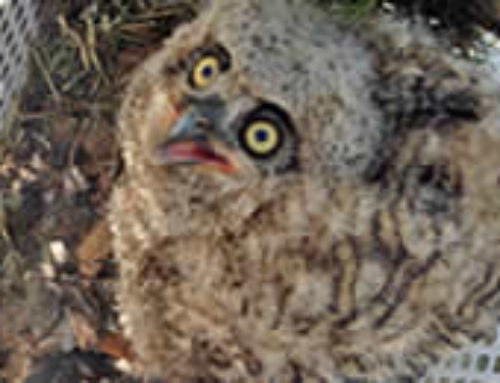 Raise your hand if you know what a Chicken Turtle is. Me either. The Western Chicken Turtle (Deirochelys reticularia miaria) is relatively rare compared to other aquatic turtles like painted turtles or red-eared sliders, but…there is a good chance you’ve seen one and not known what you were looking at. From a distance, the Chicken Turtle looks like a painted turtle or red-eared slider – a small to medium sized pond/basking turtle. It is very shy, but if you can catch one with its neck extended, you will see a huge difference. The neck is almost as long as the body! That’s quite a reach!
Raise your hand if you know what a Chicken Turtle is. Me either. The Western Chicken Turtle (Deirochelys reticularia miaria) is relatively rare compared to other aquatic turtles like painted turtles or red-eared sliders, but…there is a good chance you’ve seen one and not known what you were looking at. From a distance, the Chicken Turtle looks like a painted turtle or red-eared slider – a small to medium sized pond/basking turtle. It is very shy, but if you can catch one with its neck extended, you will see a huge difference. The neck is almost as long as the body! That’s quite a reach!
The striped unusually long neck gives the Chicken Turtle an advantage in capturing its preferred diet of crayfish, fish, tadpoles and other small vertebrates and invertebrates. Another interesting hunting adaptation is a well developed hyoid apparatus which allows the turtle to literally suck prey into its mouth! The Chicken Turtle is omnivorous, but leans strongly to carnivorous when prey is available.
Chicken Turtles are as comfortable on land as they are in the water. They will range widely between aquatic habitats, the males usually ranging much further than the females. They prefer quiet still waters such as shallow ponds, lakes, ditches and marshes. Like red eared sliders, the Chicken Turtle is social and enjoys basking on logs or rocks that are partially submerged in the water. In colder regions the Chicken Turtle will hibernate in the soft mud and will burrow deeply to avoid dry conditions.
 Courtship begins with the male vibrating his fore-claws against the female’s face. Chicken Turtles are unusual in that the reproduction season is either late fall into winter or winter into early spring. The embryos actually pause their development. This pause may be relatively short or could carry them through the winter into spring. In fact, cold temperatures must be experienced before development will continue. Eggs that incubate at cooler temperatures (77 degree F) are usually all male while eggs incubated at warmer temperatures (86 degree F) are primarily female.
Courtship begins with the male vibrating his fore-claws against the female’s face. Chicken Turtles are unusual in that the reproduction season is either late fall into winter or winter into early spring. The embryos actually pause their development. This pause may be relatively short or could carry them through the winter into spring. In fact, cold temperatures must be experienced before development will continue. Eggs that incubate at cooler temperatures (77 degree F) are usually all male while eggs incubated at warmer temperatures (86 degree F) are primarily female.
Unlike other small aquatic turtles, the Chicken Turtle tends to bite first and ask questions later. Many who thought they were safely picking up the cute little turtle by the back of the shell are startled as the neck stretches and stretches only to bite. For those who haven’t suffered a turtle bite…there’s an old saying that is very true. When will the turtle turn loose? Not until it thunders!
 There are many stories about the naming of the Chicken Turtle. Since there is nothing obviously “chicken like” about the looks of the turtle, the name may be a stretch. One theory is that the color of the belly portion of the shell (plastron) reminds one of a newly hatched chicken, another is that the long neck looks like a chicken’s and finally that it tastes like chicken. Whatever the origin of the name, the turtle is an interesting link between “regular” pond turtles and the long-necked soft-shelled turtles.
There are many stories about the naming of the Chicken Turtle. Since there is nothing obviously “chicken like” about the looks of the turtle, the name may be a stretch. One theory is that the color of the belly portion of the shell (plastron) reminds one of a newly hatched chicken, another is that the long neck looks like a chicken’s and finally that it tastes like chicken. Whatever the origin of the name, the turtle is an interesting link between “regular” pond turtles and the long-necked soft-shelled turtles.






weird.. This site is funny o.o